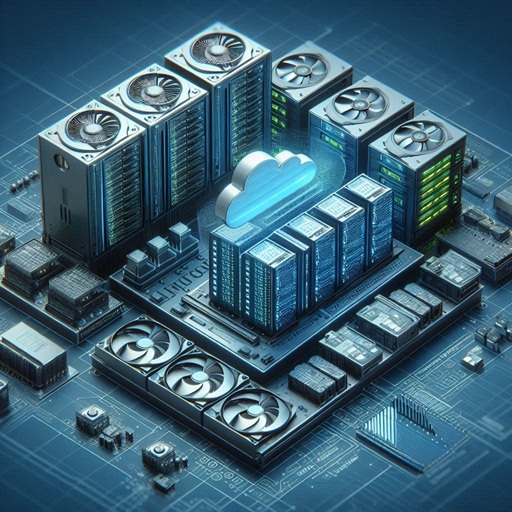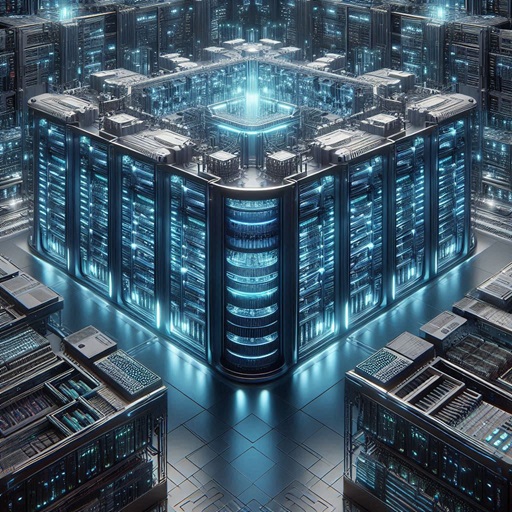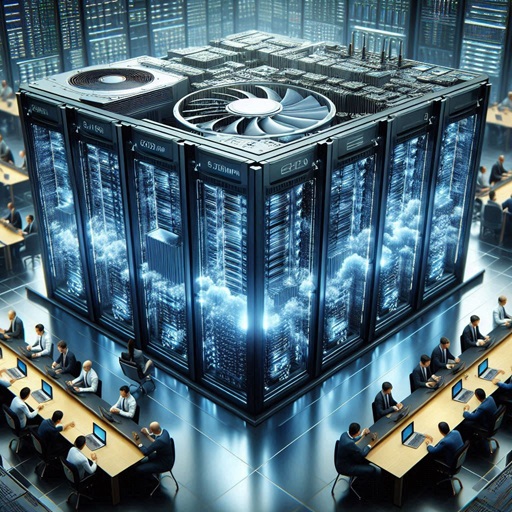The Data Center Graphics Processing Unit (GPU) market is experiencing unprecedented growth, driven by the increasing demand for high-performance computing, artificial intelligence (AI), machine learning (ML), and data-intensive applications. As data centers evolve to meet the needs of modern enterprises, GPUs have emerged as a critical component in enhancing computational power, energy efficiency, and scalability. This article delves into the current state of the Data Center Graphics Processing Unit market, its key drivers, challenges, and future opportunities.
The Data Center Graphics Processing Unit market refers to the industry focused on the production, distribution, and utilization of GPUs specifically designed for data center applications. Unlike traditional CPUs, GPUs are optimized for parallel processing, making them ideal for tasks such as AI training, deep learning, scientific simulations, and big data analytics. The market encompasses a wide range of players, including hardware manufacturers, software developers, and cloud service providers.
The global Data Center Graphics Processing Unit (GPU) Market is projected to reach USD 63.0 billion by 2028, growing at a CAGR of 34.6% during the forecast period.
The market’s rapid expansion is driven by the increasing focus on parallel computing in AI-driven data centers, the growing adoption of deep learning technology in big data analytics, and the surging demand for high-performance computing power to manage escalating data traffic. As artificial intelligence, machine learning, and cloud computing continue to evolve, data center GPUs play a crucial role in accelerating computational efficiency and optimizing data processing capabilities.
Download PDF Brochure @ https://www.marketsandmarkets.com/pdfdownloadNew.asp?id=18997435
Key Drivers of the Data Center Graphics Processing Unit Market
1. Rising Demand for AI and Machine Learning
The proliferation of AI and ML technologies has significantly boosted the demand for GPUs in data centers. These technologies require massive computational power to process and analyze large datasets, making GPUs an essential component in AI-driven applications.
2. Growth of Cloud Computing
The shift toward cloud-based services has led to an increased need for scalable and efficient data center infrastructure. GPUs play a crucial role in enhancing the performance of cloud-based applications, from video streaming to real-time data processing.
3. Advancements in GPU Technology
Innovations in GPU architecture, such as the development of tensor cores and ray tracing capabilities, have expanded the use cases for GPUs in data centers. These advancements enable faster processing speeds and improved energy efficiency.
4. Increasing Data Generation
The exponential growth of data generated by IoT devices, social media, and other digital platforms has created a need for more powerful data processing solutions. GPUs are well-suited to handle the demands of big data analytics.
5. Adoption of High-Performance Computing (HPC)
Industries such as healthcare, finance, and automotive are increasingly relying on HPC for complex simulations and modeling. GPUs are a key enabler of HPC, driving their adoption in data centers.
Challenges in the Data Center Graphics Processing Unit Market
1. High Costs
The initial investment required for GPU-powered data centers can be prohibitive for some organizations. Additionally, the ongoing costs of maintenance and energy consumption can add to the financial burden.
2. Energy Consumption
While GPUs are more efficient than CPUs for certain tasks, they still consume significant amounts of power. Data center operators must balance performance with energy efficiency to reduce operational costs.
3. Supply Chain Constraints
The global semiconductor shortage has impacted the availability of GPUs, leading to increased prices and longer lead times. This has created challenges for data center operators looking to expand their infrastructure.
4. Complexity of Integration
Integrating GPUs into existing data center environments can be complex, requiring specialized knowledge and expertise. This can slow down the adoption of GPU technology.
Trends Shaping the Data Center Graphics Processing Unit Market
1. Edge Computing and GPUs
The rise of edge computing, where data processing occurs closer to the source of data generation, is creating new opportunities for GPU adoption. GPUs are being deployed in edge data centers to support real-time analytics and low-latency applications.
2. Green Data Centers
As sustainability becomes a priority, data center operators are exploring ways to reduce their carbon footprint. Energy-efficient GPUs are playing a key role in the development of green data centers.
3. Hybrid Cloud Environments
The adoption of hybrid cloud models, which combine on-premises and cloud-based infrastructure, is driving demand for GPUs that can seamlessly operate across different environments.
4. AI-Optimized GPUs
Manufacturers are developing GPUs specifically optimized for AI workloads, featuring enhanced memory bandwidth and processing capabilities. These GPUs are expected to dominate the Data Center Graphics Processing Unit market in the coming years.
Key Players in the Data Center Graphics Processing Unit Market
The Data Center Graphics Processing Unit market is highly competitive, with several major players dominating the industry. Some of the key companies include:
- NVIDIA Corporation
- Advanced Micro Devices (AMD)
- Intel Corporation
- Google LLC
- Amazon Web Services (AWS)
- Microsoft Corporation
These companies are investing heavily in research and development to create innovative GPU solutions tailored to the needs of modern data centers.
Future Opportunities in the Data Center Graphics Processing Unit Market
1. Expansion of AI Applications
As AI continues to evolve, new applications in areas such as natural language processing, computer vision, and autonomous systems will drive demand for GPUs in data centers.
2. 5G and IoT Integration
The rollout of 5G networks and the growth of IoT devices will create new opportunities for GPU-powered data centers to support high-speed data processing and analytics.
3. Quantum Computing
While still in its early stages, quantum computing has the potential to revolutionize data processing. GPUs will play a critical role in bridging the gap between classical and quantum computing.
4. Custom GPU Solutions
As data center requirements become more specialized, there will be a growing demand for custom GPU solutions designed for specific workloads and industries.
The Data Center Graphics Processing Unit market is poised for significant growth in the coming years, driven by advancements in AI, cloud computing, and high-performance computing. While challenges such as high costs and energy consumption remain, the opportunities for innovation and expansion are vast. As data centers continue to evolve, GPUs will remain at the forefront of this transformation, enabling faster, more efficient, and more scalable computing solutions.
FAQs
1. What is the Data Center Graphics Processing Unit market?
The Data Center Graphics Processing Unit market refers to the industry focused on GPUs designed for data center applications, including AI, machine learning, and high-performance computing.
2. What are the key drivers of the Data Center Graphics Processing Unit market?
Key drivers include the rising demand for AI and machine learning, growth of cloud computing, advancements in GPU technology, increasing data generation, and the adoption of high-performance computing.
3. What challenges does the Data Center Graphics Processing Unit market face?
Challenges include high costs, energy consumption, supply chain constraints, and the complexity of integrating GPUs into existing data center environments.
4. Who are the key players in the Data Center Graphics Processing Unit market?
Major players include NVIDIA Corporation, Advanced Micro Devices (AMD), Intel Corporation, Google LLC, Amazon Web Services (AWS), and Microsoft Corporation.
5. What are the future opportunities in the Data Center Graphics Processing Unit market?
Future opportunities include the expansion of AI applications, 5G and IoT integration, quantum computing, and the development of custom GPU solutions.



